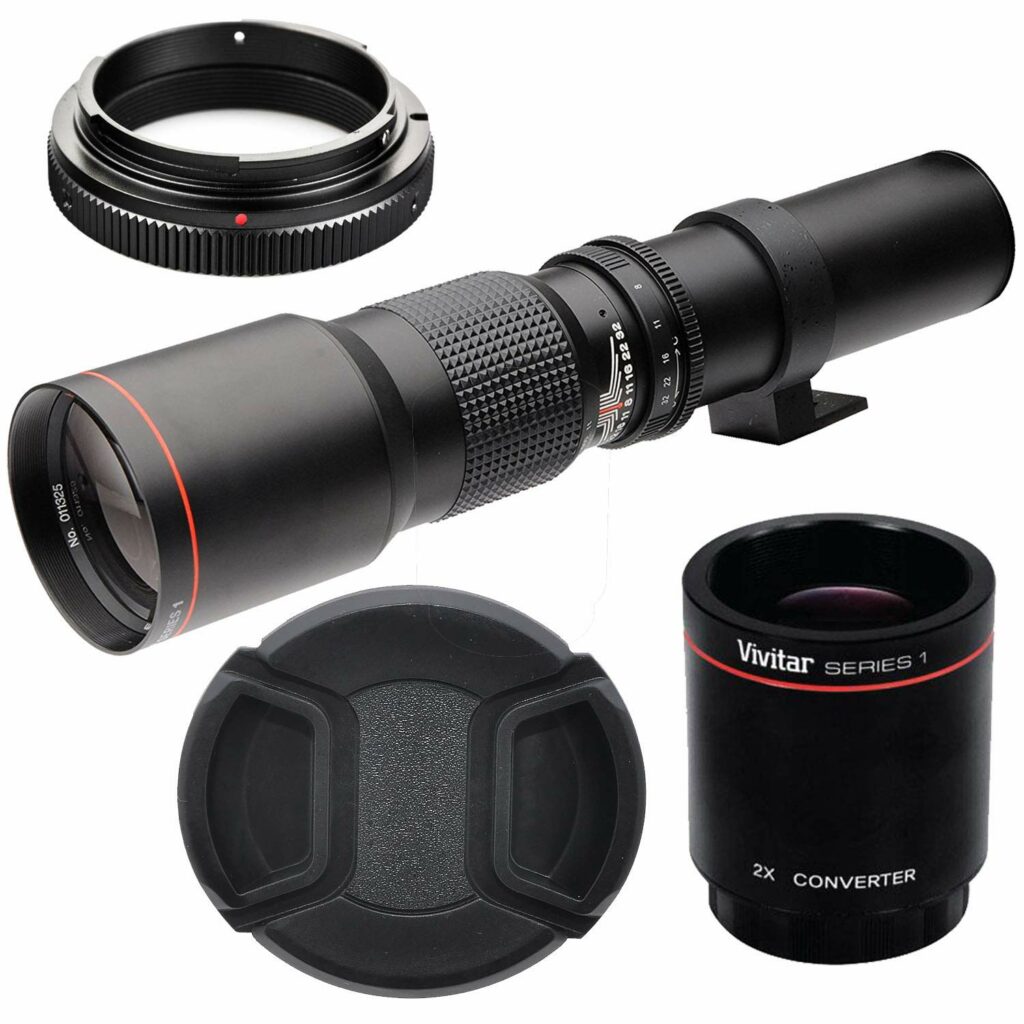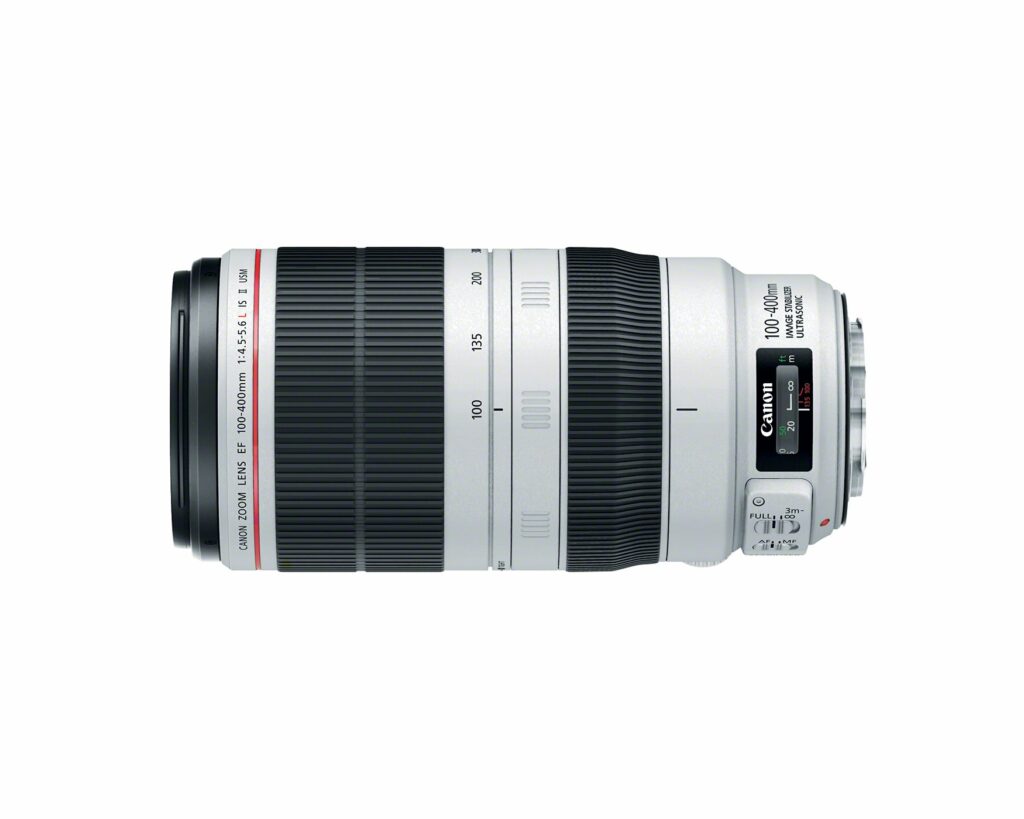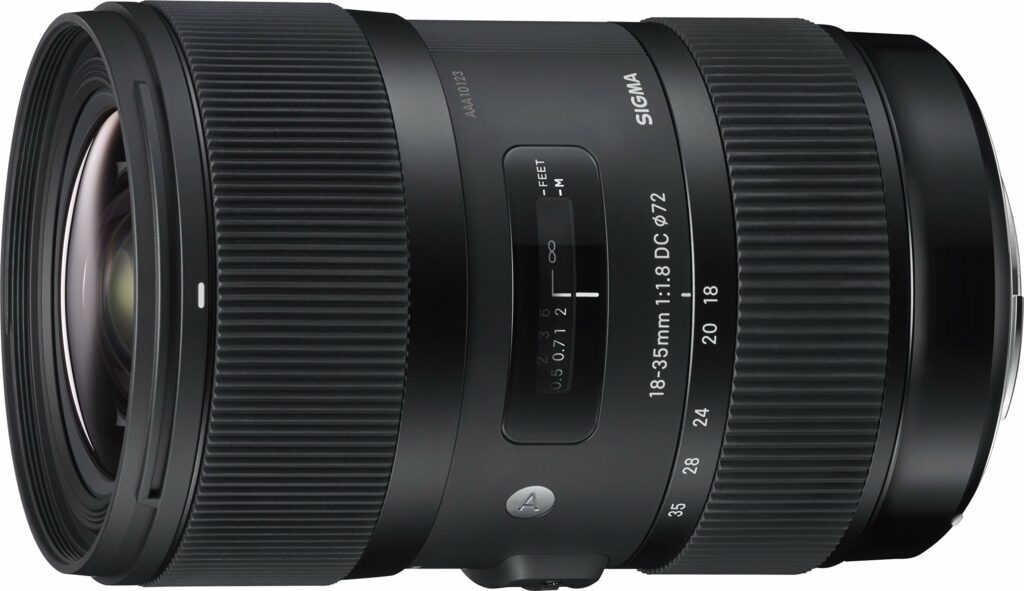When selecting a lens for moon photography, it is essential to consider the focal length and aperture. The focal length determines the magnification level of the lens, while the aperture affects the amount of light that enters the camera. A lens with a longer focal length and a wider aperture is ideal for moon photography.
Another important factor to consider when choosing a lens for moon photography is the image stabilization feature. This feature reduces camera shake, which is crucial when taking photos of the moon at night. Additionally, a lens with weather-sealing can protect the equipment from moisture and dust, ensuring that it lasts longer.
In summary, the best lenses for moon photography at night are those with a long focal length, wide aperture, image stabilization, and weather-sealing. These features allow photographers to capture stunning images of the moon with great detail and clarity.
Best Lenses for Moon Photography at Night
When it comes to capturing the perfect shot of the moon at night, having the right lens can make all the difference. With so many options on the market, it can be overwhelming to choose the best one for your needs. That’s why we’ve put together a list of the best lenses for moon photography at night. Whether you’re a professional photographer or a hobbyist, these lenses will help you take stunning photos of the moon in all its glory.
Sigma 150-600mm 5-6.3 Contemporary DG OS HSM Lens for Canon Canon EF Cameras

If you’re looking for a lens for moon photography at night, the Sigma 150-600mm 5-6.3 Contemporary DG OS HSM Lens is a great option to consider.
Pros
- Lightweight and compact in construction for higher useability
- Water and oil repellent coating on front glass element makes maintenance of the lens surface
- Minimum focusing distance of 280 cm/110.2 inches, focal length of 150-600mm
Cons
- Heavy and not ideal for handheld shooting
- Autofocus can be slow in low light situations
- Image quality may not be as sharp at longer focal lengths
This lens is a great choice for those who want a versatile lens that can handle a wide range of photography needs. The lightweight and compact design make it easy to carry around, while the water and oil repellent coating on the front glass element ensures that the lens stays clean and well-maintained.
One downside to the Sigma 150-600mm lens is that it can be quite heavy, which can make it difficult to use for extended periods of time or for handheld shooting. Additionally, the autofocus can be slow in low light situations, which may be frustrating for some users.
Overall, if you’re looking for a lens that can handle a wide range of photography needs and is easy to use, the Sigma 150-600mm 5-6.3 Contemporary DG OS HSM Lens is definitely worth considering.
High-Power 500mm/1000mm f/8 Manual Telephoto Lens

If you’re looking for an affordable lens to capture stunning moon photography at night, the High-Power 500mm/1000mm f/8 Manual Telephoto Lens by Big Mike’s Electronics is a great option to consider.
Pros
- The lens is compatible with a wide range of Canon EOS SLR cameras.
- The 500mm telephoto focal length is perfect for capturing detailed images of the moon.
- The 2X teleconverter doubles the power of your lens to 1000mm, allowing you to get even closer to your subject.
Cons
- The lens is fully manual, which may take some time to get used to if you’re used to autofocus lenses.
- The lens is quite heavy, which may make it difficult to carry around for extended periods.
- The lens may not be as sharp as some higher-end lenses on the market.
This lens is a great option for amateur photographers who want to capture stunning images of the moon without breaking the bank. While it may take some time to get used to the fully manual focus, the 500mm telephoto focal length and 2X teleconverter make it easy to get up close and personal with your subject.
The lens is compatible with a wide range of Canon EOS SLR cameras, making it a versatile addition to your photography arsenal. However, it’s worth noting that the lens is quite heavy, which may make it difficult to carry around for extended periods.
Overall, if you’re looking for an affordable lens to capture stunning moon photography at night, the High-Power 500mm/1000mm f/8 Manual Telephoto Lens is definitely worth considering.
Canon EF 100-400mm f/4.5-5.6L is II USM Lens

If you’re a wildlife or sports photographer, the Canon EF 100-400mm f/4.5-5.6L is II USM Lens is a great choice for you. This lens provides excellent resolving power, impressive contrast and resolution, and reduced chromatic aberration across the entire zoom range.
Pros
- The rotation-type zoom ring allows for more precise composition and excellent balance when handholding.
- The improved zoom torque adjustment ring allows easy setting of zoom tension.
- The lens is highly resistant to dust and water, making it durable enough for shooting in harsh conditions.
Cons
- The lens is quite heavy, which may make it difficult to carry around.
- The price point is quite high, so it may not be the best choice for budget-conscious photographers.
- The lens is not ideal for low-light photography.
Overall, the Canon EF 100-400mm f/4.5-5.6L is II USM Lens is an excellent choice for photographers who need a high-quality telephoto lens. The lens provides excellent image quality, is highly durable, and provides a range of features that make it an excellent choice for sports and wildlife photographers.
The lens features one fluorite and one super UD element to help provide impressive contrast and resolution with reduced chromatic aberration across the entire zoom range. Canon’s new Air Sphere Coating (ASC) helps significantly reduce backlit flaring and ghosting, while fluorine coatings on the front and rear lens surfaces help lessen smears and fingerprints. A 9-blade circular aperture renders beautiful, soft backgrounds, and a 3 mode (standard, panning and exposure only) Optical Image Stabilizer provides up to 4 steps of image correction.
The new inner focusing AF system helps ensure fast and accurate focus down to 3.2 ft. with a .31x maximum magnification. Usability enhancements include a rotation-type zoom ring with adjustable zoom torque for more precise, customizable zoom performance, a redesigned tripod mount that can be attached and detached without removing the lens from the camera, and an all-new lens hood with a side window that makes it simple to adjust specialty filters–like polarizers–without the need to remove the hood.
In summary, the Canon EF 100-400mm f/4.5-5.6L is II USM Lens is a stellar performer with refined controls for a wide variety of situations.
Panasonic LUMIX S Series Camera Lens, 50mm F1.8 L-Mount Interchangeable Lens for Mirrorless Full Frame Digital Cameras, S-S50

If you’re looking for a compact and lightweight lens that can handle a wide range of photography, from landscape to portraits and snapshots, the Panasonic LUMIX S Series Camera Lens, 50mm F1.8 L-Mount Interchangeable Lens for Mirrorless Full Frame Digital Cameras, S-S50 is an excellent choice.
Pros
- Works with all L-Mount full-frame digital cameras for maximum versatility
- Provides a wide range of creative choices for portraiture, including beautiful bokeh and smooth defocus gradation
- Suppressed focus breathing and smooth aperture control allow you to shoot videos with minimal re-adjustment or the rigs during your shooting
Cons
- A bit sluggish in autofocus
- No image stabilization
- A bit pricey compared to other similar lenses
This lens is an excellent all-around lens that excels in both photography and videography. The lens is compact and lightweight, making it easy to carry around all day. The lens uses three aspherical lenses to achieve both high depiction performance and beautiful bokeh, making it perfect for portraiture. The lens also suppresses breathing during focus and realizes smooth exposure change by microstep control of the aperture, enabling high-quality video expression.
The lens is compatible with all L-Mount full-frame digital cameras, making it a versatile tool for any photographer or videographer. The lens is also dust-, splash-, and low-temperature resistant, making it dependable even when shooting outdoors.
While the autofocus is a bit sluggish, the lens more than makes up for it with its excellent image quality and video capabilities. The lens is a bit pricey compared to other similar lenses, but the quality and versatility make it worth the investment for serious photographers and videographers.
In conclusion, if you’re looking for a high-quality, versatile lens that can handle a wide range of photography and videography, the Panasonic LUMIX S Series Camera Lens, 50mm F1.8 L-Mount Interchangeable Lens for Mirrorless Full Frame Digital Cameras, S-S50 is an excellent choice.
Sigma 18-35mm F1.8 Art DC HSM Lens

If you’re looking for a lens that can capture stunning moon photography at night, then the Sigma 18-35mm F1.8 Art DC HSM Lens is definitely worth considering.
Pros
- The F1.8 maximum aperture allows for stunning low-light performance and beautiful bokeh.
- The ring-type ultrasonic-type AF motor with full-time manual focusing makes it easy to get the perfect shot.
- The lens is compatible with Canon EF (EF-S), Sony Alpha (dot), and Nikon f (DX) mounts, making it versatile for different camera models.
Cons
- Due to the very shallow depth of field of fast glass, users may experience focus shift and inconsistent AF.
- Shooting at smaller aperture values will increase the DOF, which reduces “focus issues” as a result of the variations and decreases the amount of fall of (Vignetting).
- The lens is only kind of usable at 35mm zoom on a Canon full frame such as Canon 6D, etc., due to major Vignetting problems.
This lens is perfect for those who want to capture stunning moon photography at night. The F1.8 maximum aperture allows for stunning low-light performance and beautiful bokeh, making it perfect for night-time shots. The ring-type ultrasonic-type AF motor with full-time manual focusing makes it easy to get the perfect shot, while the lens is compatible with Canon EF (EF-S), Sony Alpha (dot), and Nikon f (DX) mounts, making it versatile for different camera models.
However, due to the very shallow depth of field of fast glass, users may experience focus shift and inconsistent AF. Shooting at smaller aperture values will increase the DOF, which reduces “focus issues” as a result of the variations and decreases the amount of fall of (Vignetting). Additionally, the lens is only kind of usable at 35mm zoom on a Canon full frame such as Canon 6D, etc., due to major Vignetting problems.
Overall, the Sigma 18-35mm F1.8 Art DC HSM Lens is a great investment for those who want to capture stunning moon photography at night.
Buying Guide
When choosing a lens for moon photography at night, there are several factors to consider. Here are some features to look for when selecting the best product:
Aperture
A wide aperture is important for night photography as it allows more light to enter the lens, resulting in brighter and sharper images. Look for lenses with an aperture of f/2.8 or wider.
Focal Length
The focal length of the lens determines the magnification of the moon in your photos. Longer focal lengths, such as 200mm or more, are ideal for capturing detailed shots of the moon.
Image Stabilization
Image stabilization helps to reduce camera shake, resulting in sharper images. Look for lenses with built-in image stabilization or consider using a tripod to stabilize your camera.
Compatibility
Make sure the lens you choose is compatible with your camera’s mount. Some lenses may require an adapter to fit your camera.
Lens Coating
Lens coating can affect the quality of your images. Look for lenses with high-quality coatings that reduce glare and improve contrast.
Price
Consider your budget when selecting a lens. While higher-end lenses may offer better image quality, there are also affordable options available that can produce great results.
By considering these factors, you can choose the best lens for moon photography at night that meets your needs and budget.
Related: Lunar Eclipse Camera Settings: Essential Tips for Capturing the Perfect Shot
Frequently Asked Questions
What is the best focal length for moon photography?
The best focal length for moon photography is between 200mm and 400mm. This is because the moon is far away, and a longer focal length will allow you to capture more detail. However, it’s important to note that the focal length will also depend on the size of the moon in the frame.
What are the recommended camera settings for moon photography?
The recommended camera settings for moon photography are ISO 100, aperture f/11, and shutter speed 1/125. However, these settings may vary depending on the lighting conditions and the specific camera you’re using. It’s always a good idea to experiment with different settings to find what works best for you.
Which camera is best for moon photography?
Any camera with manual controls and a long zoom lens can be used for moon photography. However, a DSLR or mirrorless camera with a full-frame sensor will provide the best image quality. It’s also important to choose a camera with good low-light performance.
What is the best lens for moon photography with a telescope?
The best lens for moon photography with a telescope is a T-adapter and a prime lens with a focal length of 1000mm or more. This will allow you to capture the moon in great detail and with high resolution.
Can I use a phone camera for moon shots?
Yes, you can use a phone camera for moon shots. However, the image quality may not be as good as with a DSLR or mirrorless camera. It’s important to use a tripod and to experiment with different settings to get the best results.
What is the best cheap camera for moon photography?
The Canon EOS Rebel T7 is a great cheap camera for moon photography. It has a 24.1-megapixel sensor, manual controls, and a long zoom lens. It’s also compatible with a wide range of lenses and accessories, making it a versatile option for beginners.
